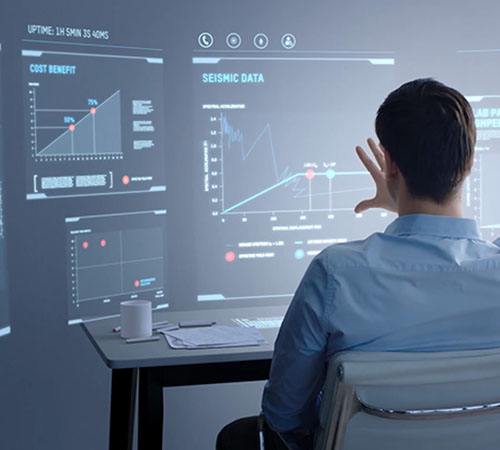Business Process Management
Achieve your business goals. A Digital BI we design, model, implement, monitor and optimize process both automated and non-automated.
Its essential purpose is to design, model, implement, monitor, and optimize processes, both automated and non-automated—the process can plan and achieve various organizational and business goals.


Achieve your business goals. A Digital BI we design, model, implement, monitor and optimize process both automated and non-automated.
Its essential purpose is to design, model, implement, monitor, and optimize processes, both automated and non-automated—the process can plan and achieve various organizational and business goals.

The first step begins with documenting all processes. Take the time to identify past processes, current processes, and goal processes. Gather data from stakeholders and management, then analyze the data to gain an insight into desired processes, and how they are going to align with organizational objectives. Proper considerations along the way are alerts and notifications, service level agreements, task hand-over, operating procedures, and escalations.
Use this information to begin designing each step of the process, identify the owner of those steps, consider necessary resources, and think of whether or not current or past processes should be considered during the design phase.
Take the design from the first phase, and introduce a series of variables or hypotheticals. For instance, changes in cost, changes in circumstances, or changes in staff. This is ideal for a “what-if” analysis for all levels of the design.
A good method for introducing the “what-if” scenarios is to take the design and create a physical model to help define the scenarios by physically representing changes in processes, business rules, or any important identifications.


Take the design from the first phase, and introduce a series of variables or hypotheticals. For instance, changes in cost, changes in circumstances, or changes in staff. This is ideal for a “what-if” analysis for all levels of the design.
A good method for introducing the “what-if” scenarios is to take the design and create a physical model to help define the scenarios by physically representing changes in processes, business rules, or any important identifications.

This phase requires a very delicate balance between implementing on a wide scale and implementing on a small scale. Take the design as it was, really evaluate the modeling and the variables, and create a strong implementation plan.
Business process management devoid of close monitoring can prevent new rollouts from performing optimally or being successful at all levels. Monitoring should occur at all levels and focus on each individual task as designed and modeled. If your rollout includes connection with an outside vendor, gather necessary information from the vendor to ensure that your processes are beneficial to them, and beneficial to their end users.
Part of the design and modeling processes should include the degree and levels of data to be gathered. For instance, a series of steps that move from a work order, to a deliverable of the work order, to successful payment from the end user. Consider whether or not the process has moved along as designed, any roadblocks that stand in the way of an optimized system, and whether or not these can be optimized.


Business process management devoid of close monitoring can prevent new rollouts from performing optimally or being successful at all levels. Monitoring should occur at all levels and focus on each individual task as designed and modeled. If your rollout includes connection with an outside vendor, gather necessary information from the vendor to ensure that your processes are beneficial to them, and beneficial to their end users.
Part of the design and modeling processes should include the degree and levels of data to be gathered. For instance, a series of steps that move from a work order, to a deliverable of the work order, to successful payment from the end user. Consider whether or not the process has moved along as designed, any roadblocks that stand in the way of an optimized system, and whether or not these can be optimized.

Refer to the design, the model, the implementation, and the data gathered from monitoring to get a better understanding of optimization and what needs to be done to correct any phases that didn’t work as designed, or things that weren’t accounted for during the modeling process. The data from monitoring is closely analyzed and all bumps and successes are accounted for. Consider implementing processes that are successful to roadblocks along the way, and refer to your modeling to see if you accounted for any of the roadblocks.

